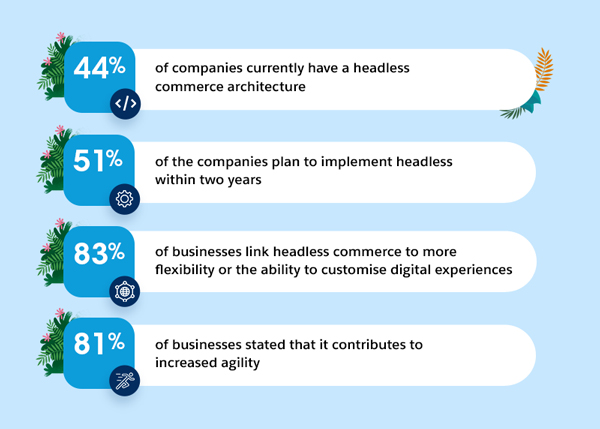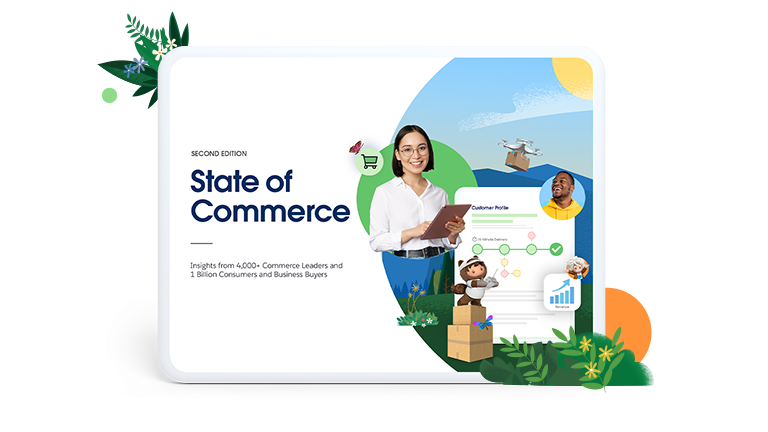The Indian e-commerce landscape is continuously evolving - in terms of both scale and technological sophistication. The changes of the previous ten years have been accelerated and consolidated in the last two years, causing digital to become the new standard in fields like customer engagement. Today, digital solutions are being used to drive meaningful conversations between customers and brands, letting companies focus on customer centricity, handle complex customer demands and expand their customer base.
The second edition of the Salesforce State of Commerce Report offers insights into how B2B and B2C ecommerce businesses are responding to the new customer engagement landscape emerging from the growing dominance of digital technologies. The report, which includes insights from more than 4,000 digital commerce companies from 25 countries, including 200 from India, gives insights into how organisations combine data, technology, and digital channels to set new benchmarks in customer engagement.
How are businesses adopting digital technologies to drive customer engagement and ecommerce revenues?
1. Using data for personalised customer engagement
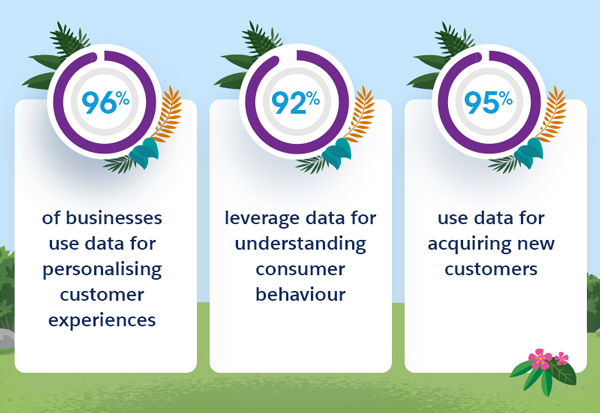
2. Offering more choice of payment options for greater convenience
Diverse payment options are about greater choice and convenience for customers. For brands, it is about appealing to a wider variety of customers and easing the payment process to facilitate more sales.
Accordingly, businesses are continually increasing the point-of-sale payment choices they offer across all ecommerce interfaces, including websites. While traditional digital payment channels such as debit cards, credit cards, and bank transfers continue to see high adoption, Near Field Communication (NFC)-based options such as Apple Pay and Google Pay are set to see rapid penetration in the months to come.
71% of Indian respondents accept at least one mobile wallet option at checkout. In the next two years, this is set to evolve; businesses will need to include payment options that reflect the habits and lifestyle preferences of customers, especially millennials. This will be critical to bridge the gap between effective client engagement and optimum conversion rates.
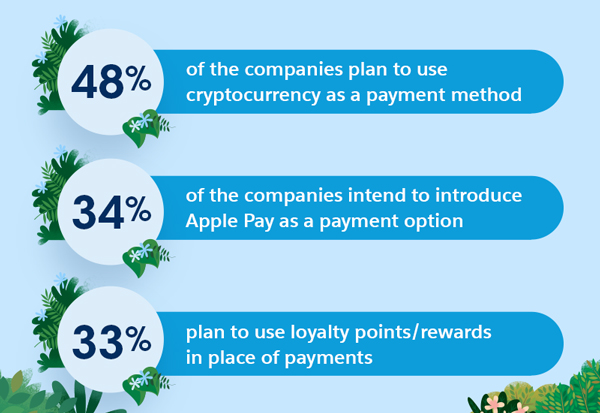
3. Creating effective customer experiences on new digital channels to engage customers where they are
Using multiple digital marketing channels is crucial to get the exposure and outcomes you want from your marketing efforts. Since the target market is omnichannel, businesses lose out if they focus on one channel all the time. A variety of distribution options also means businesses can produce various types of content to engage and excite the audience across various platforms.
Companies in India expect digital channels to contribute an average of 48% of revenue in the next two years to their overall business. In this context, they continue to invest in proven commerce-friendly channels such as websites, mobile apps, and social media platforms. This strategy holds for both B2C and B2B businesses.
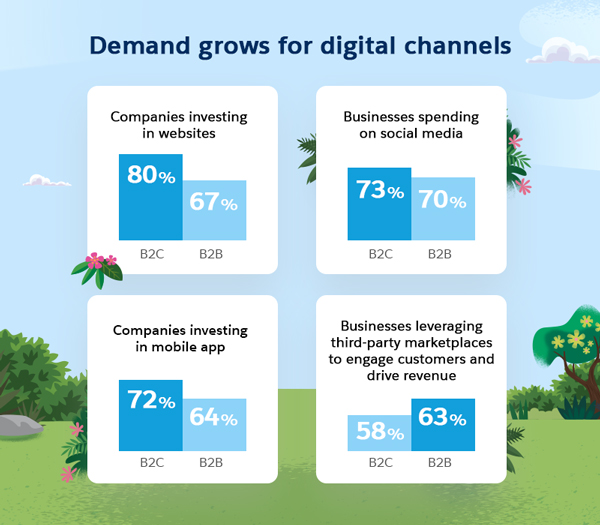
Businesses are also aware of the need to continually explore newer, emerging channels -- such as Web3, TikTok, Metaverse and new online storefronts -- as part of their strategy to meet and engage the digital customer where they are. In fact, presence on new channels is perceived as the key to effective customer engagement and conversion in the digital context. As per the report, this is true for companies at all stages of the digital evolution – leaders, moderates, and laggards.
More than 50% of businesses anticipate expanding their presence on new digital channels in the next two years.
A key enabler in this context is headless commerce; it gives businesses the ability to add and update new sales channels swiftly. Simply put, headless commerce separates an ecommerce application's front end and back end. The use of experience managers, APIs, and tools like Heroku and MuleSoft defines headless commerce, as well as increased significance of IT partners. Every company's innovation plan must include these resources because they bring new features and experiences that engage customers and exceed their expectations.
Businesses will use this ability to drive consistent, high-impact customer engagement in a fast-evolving digital environment with new channels, behaviours, and expectations.
